- Equipped with the six-speed manual, the Mustang GT hit 60 in 4.8 seconds.
- Big Brembos and sticky Pirelli tires yield improved braking and skidpad figures.
- The EcoBoost ran the quarter mile 1.5 seconds slower than its V8-powered sibling.
Track Tested: New Mustang GT Has More Power But 0-60 Remains the Same
We also have numbers on the new EcoBoost
Lately, it’s been all about the 2024 Ford Mustang here at Edmunds. So far we’ve driven the GT and EcoBoost models around some Los Angeles mountains roads and had the chance to dance with the Dark Horse at Charlotte Motor Speedway. In addition to our written reviews, you can watch all of our videos here.
Today, we have an exciting update on the Mustang story, our official Edmunds track-tested numbers for both GT and EcoBoost models. We put the pairing through our usual gauntlet of performance evaluations including 0-60 sprints, quarter mile, 60-0 hard braking and skidpad. Let’s see how things shook out.
A small step forward
With its reworked 5.0-liter V8, the new GT is good for 486 horsepower and 418 lb-ft of torque when fitted with Ford's optional active-valve exhaust. That said, we know that the seventh-generation Mustang isn’t all that different from the car that it replaces, at least mechanically speaking. Those of you expecting wildly improved numbers should probably take a seat for this.
Our GT test car is a fastback equipped with the optional Performance package and a six-speed manual transmission. That means this slick coupe is rolling on sticky Pirelli P Zero summer tires (275-section-width in the rear). The quickest sprint to 60 mph we managed happened in 4.8 seconds using an engine launch speed of 2,800 rpm — ideal for our testing conditions. This produced the cleanest launch, with minimal wheelspin. The GT then put down a 12.7-second quarter-mile time, finishing at 111.6 miles per hour.
In 2015, we tested a similar sixth-generation GT coupe with the Performance package and a manual, and it, too, hit 60 in 4.8 seconds. In this go-around, the GT finished the quarter-mile in 13 seconds — or 0.3 second slower than the new 2024 model. When it comes to braking and grip levels, the new Mustang GT adds a bit more space between it and the old version. We stopped from 60 mph in a swift 103 feet — a 5-foot improvement. And around the skidpad, the GT pulled 0.97 g, a modest increase over the 2015 model’s 0.95 g.
Considering the eight years separating the two cars in this case, the moral of the story here is that the 2024 Mustang GT is a better performer, but not by much. We’re eager to see how the spicier Dark Horse performs when we get it in for testing soon.
EcoBoost on track
As it did with the GT, Ford tweaked the EcoBoost’s powertrain for 2024 and came up with a few more ponies. The “new” 2.3-liter turbocharged four-cylinder puts out 315 hp and 350 lb-ft. This time around, the EcoBoost is automatic-only so it still uses a revised version of Ford's well-known 10-speed. Our tester also arrived equipped with the Performance package, so it has the same Pirelli P Zero summers as the GT, albeit with slightly smaller 255-section rears.
On the straightaway, we managed a 0-60 in 5.6 seconds and the quarter mile in 14.2 seconds at 95 mph. The EcoBoost fared well in our braking and handling tests. It stopped from 60 mph in 105 feet — just 3 feet more than the hardtop GT. And on the skidpad, the EcoBoost pulled an identical 0.97 g, meaning those Pirellis are putting in the work regardless of spec. Keep in mind that we tested a convertible, which weighs roughly 150 pounds more than the hardtop.
Whether or not Ford does another High Performance package version of the EcoBoost in the future remains to be seen, but even as a baseline, these are solid numbers for a four-cylinder sports car.
Edmunds says
Our track-tested numbers confirm what we already knew: The 2024 Mustang GT and EcoBoost bring only marginal improvements in the performance department. But that doesn't make these cars' results disappointing, and we know that this is only the beginning for the seventh-generation Mustang. We're already looking forward to testing the higher-power Dark Horse variant, and we're sure that Ford has more variants up its sleeve to make this pony car put down even better numbers in the future.
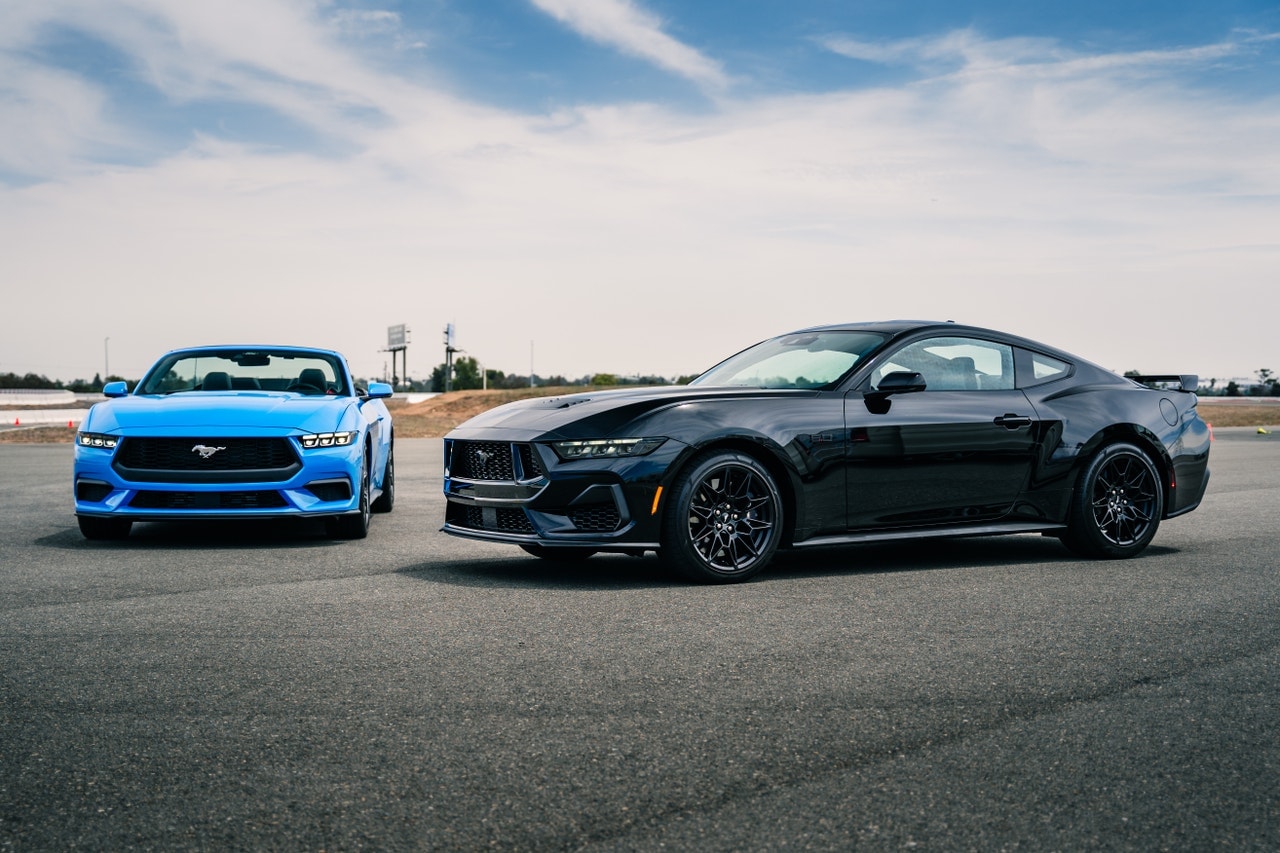
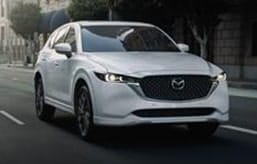

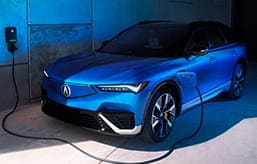
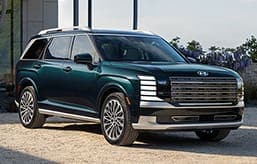

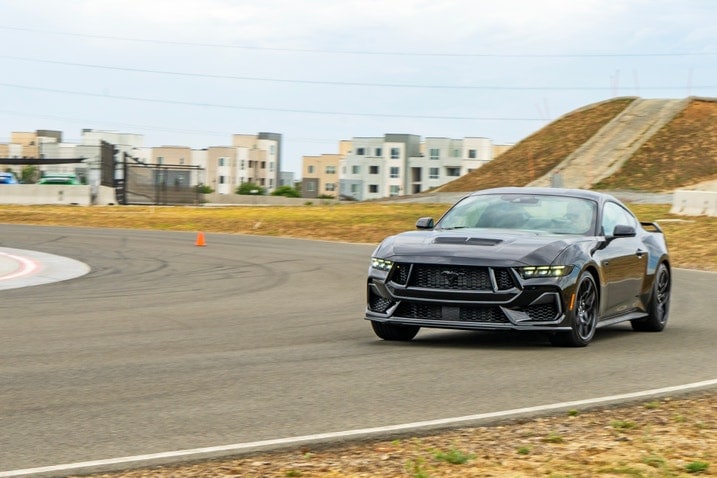
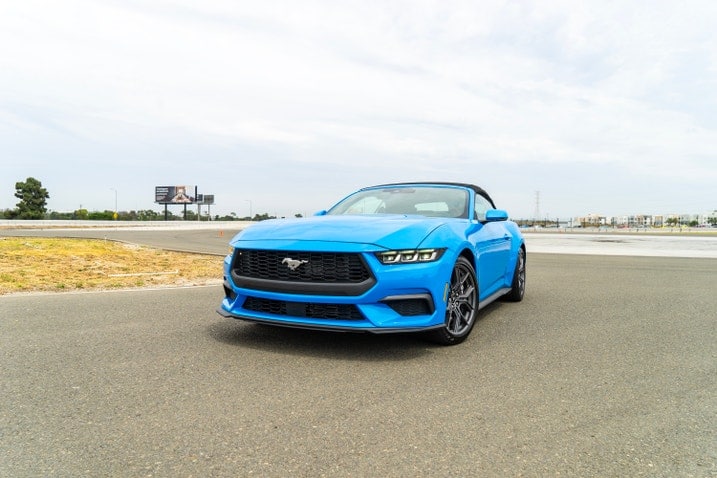
 by
by